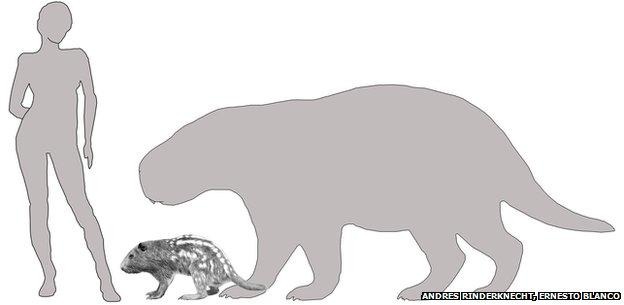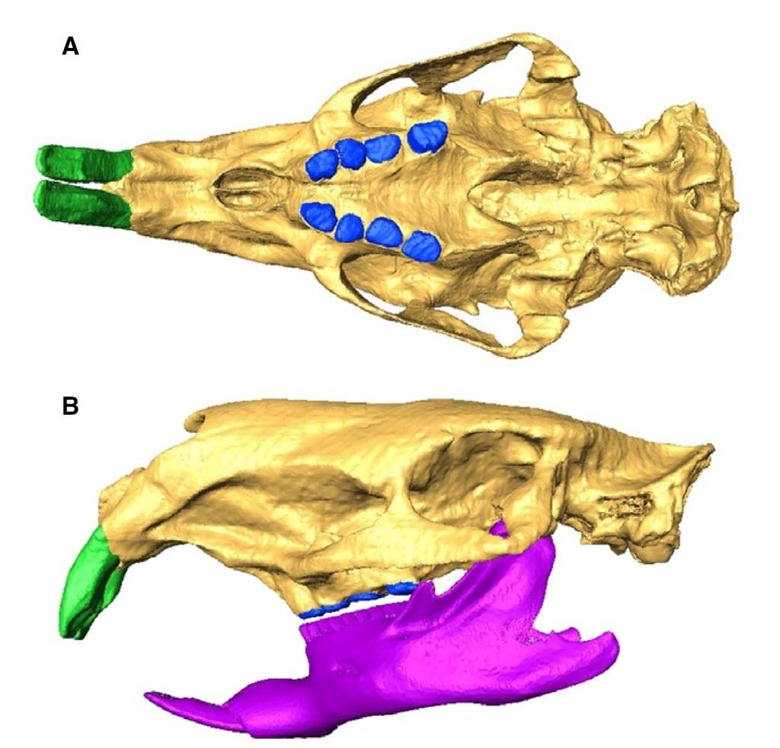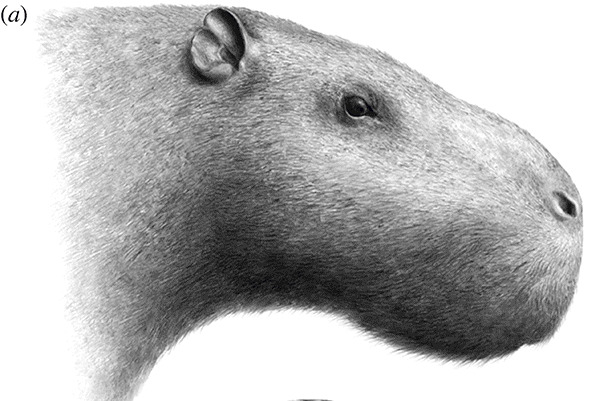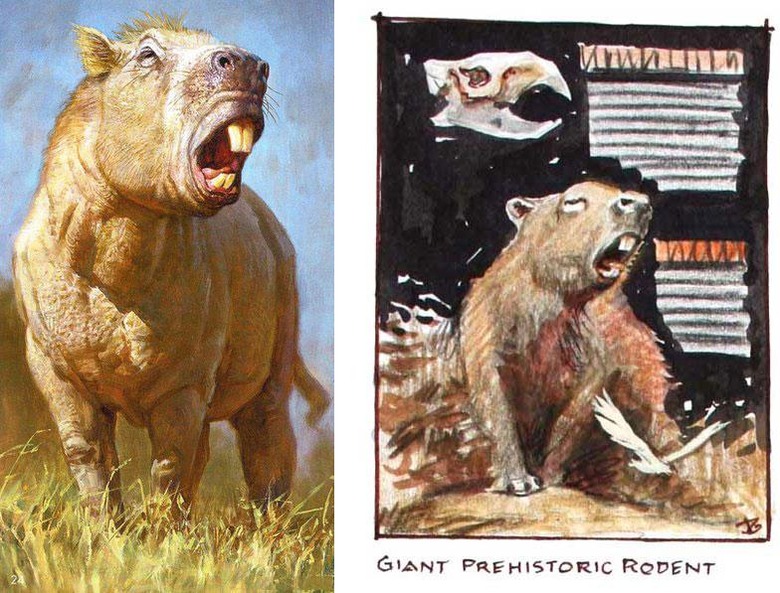One-ton rodent used tusks like elephant
A paper has been produced by three researchers in which they predict the bite force of the largest rodent to have ever been discovered. Philip G. Cox, Andrés Rinderknecht, and Ernesto Blanco collaborated on a paper in which they suggest that the rodent called Josephoartigasia monesi used its incisors like tusks, "processing tough vegetation with large bite forces at the cheek teeth." Hows that for a horrifying image for you? A 2,205-pound (1000 kg) (over a ton) rodent with tusks, ready to eat your shrubberies at a moment's notice!
According to these researchers, the bite force they estimate this mammal had was something like "1389 N at the incisors, rising to 4165 N at the third molar."
Rats have a bite force closer to 13 N, while a human has around 340 N. The bite force of this ancient rodent was far closer to that of a tiger's.
NOTE: 10 kilograms-force (100 N)

Above you'll see the animal compared to its closest living relative, a pacerana, and a human being of average height.
The skull you see here is reconstructed digitally by the team responsible for the Josephoartigasia paper released this week. The tusks, exist to the front, above, and below the secondary set of teeth, or molars used for chewing.

These large tusks could have been used for several reasons – not just for looks, that's for certain.
• Digging for roots
• Defense against predators
• Stripping bark off treats
• Display to attract potential mates
Josephoartigasia is a rather unique animal. First discovered in 2007 in a 4.2 million year old piece of land in San José Formation, Uruguay. This rodent lived in an area covered in forest during the Pliocene–Pleistocene period when the creature lived, between 2 and 4 million years ago.
The length of the one to have been discovered thus far was 53 cm (20.87 in) long.

The above animated image is a combination of illustrations. The furry illustration comes from (D. branickii) from the first discovery of the animal, while the skull comes from this new study – reconstructing the fullness of the truth.
The paper "Predicting bite force and cranial biomechanics in the largest fossil rodent using finite element analysis" was published in the Journal of Anatomy from the Anatomical Society for February of 2015. Original findings on the Josephoartigasia monesi can be found in Rinderknecht, A. and Blanco, R.'s paper "The largest fossil rodent" published in 2008.
The image at the head of this article is a maquette created for the painting done here (below) by artist James Gurney, famous for his illustrations in the book series Dinotopia.

Source: Cox, P. G., Rinderknecht, A. and Blanco, R. E. (2015), Predicting bite force and cranial biomechanics in the largest fossil rodent using finite element analysis. Journal of Anatomy. doi: 10.1111/joa.12282
Source: Rinderknecht, A., Blanco, R. 2008. The largest fossil rodent. Proceedings of the Royal Society B. 275: 923-928 doi: 10.1098/rspb.2007.1645
